Nestled on the island of Crete, the ruins of Knossos Palace stand as a testament to the sophisticated Minoan civilization. This vast complex, dating back to around 1900 BC, was the ceremonial and political heart of the region, boasting intricate frescoes, advanced engineering, and a labyrinth of interconnected structures. Visitors can explore the iconic Throne Room, adorned with an alabaster throne and frescoes of griffins, and uncover the secrets of the Minoans’ urban planning prowess. From its captivating history to its architectural marvels, Knossos Palace beckons travelers to delve deeper into the remarkable legacy of this ancient civilization.
Key Points
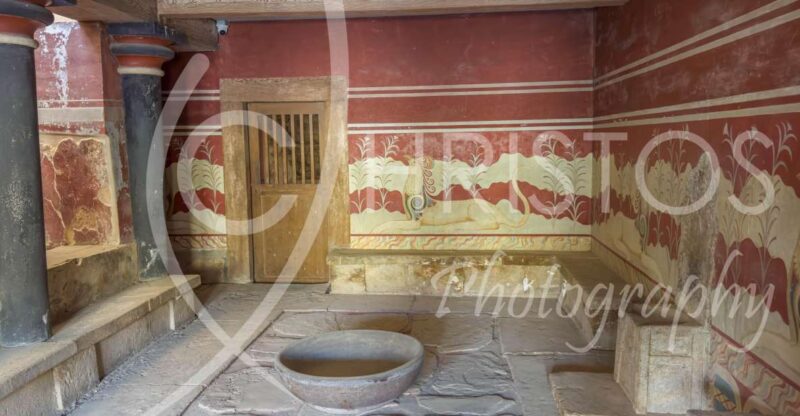
- Knossos Palace was the political and ceremonial center of the Minoan civilization, featuring intricate corridors, multi-story buildings, and vivid frescoes.
- The iconic Throne Room, adorned with an alabaster throne and stunning griffins fresco, showcased the grandeur and artistry of Minoan royal life.
- The palace’s advanced drainage and plumbing systems demonstrated the Minoans’ sophisticated engineering prowess and understanding of hydraulics.
- The labyrinthine layout of interconnected structures, including the Queen’s Megaron and Storage Magazines, reflected the Minoans’ advanced approach to urban planning.
- Knossos Palace is a UNESCO World Heritage Site and one of the most significant archaeological sites in the Aegean region, though accessibility can be limited for certain visitors.
Exploring the Ancient Ruins
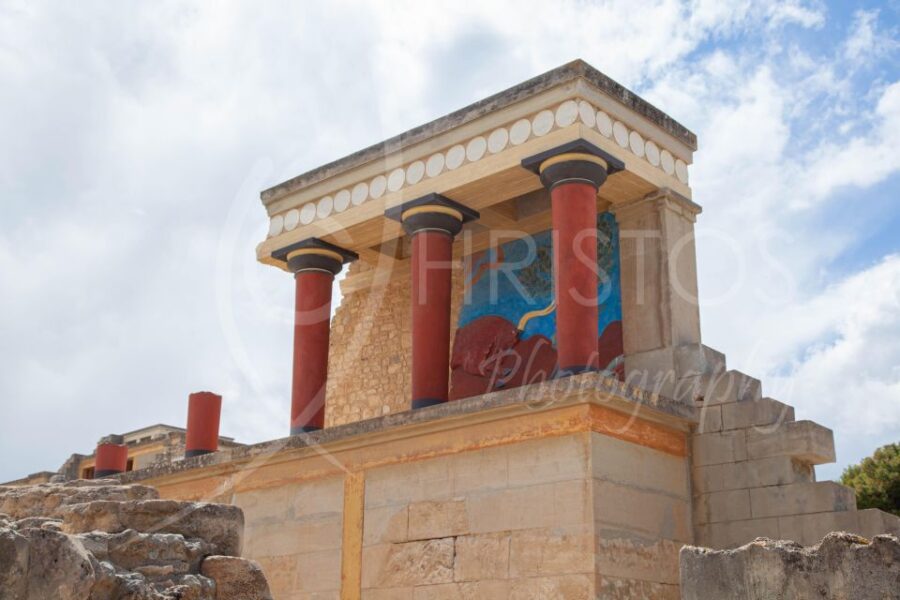
How can one explore the ancient ruins of Knossos Palace and uncover the secrets of the Minoan civilization? Visitors to this iconic archaeological site can enjoy the complex of interconnecting structures built around 1900 BC, the political and ceremonial center of this advanced ancient culture.
Strolling through the labyrinthine corridors and multi-story buildings, they’ll admire the vivid frescoes depicting scenes from daily life and religious rituals.
The iconic Throne Room, with its alabaster throne and griffins fresco, offers a glimpse into the palace’s former grandeur.
Discovering the intricate layout, visitors can appreciate the advanced engineering and plumbing system that served various purposes within this remarkable ancient complex.
You can also read our reviews of more tours and experiences in Heraklion.
Minoan Civilization’s Legacy
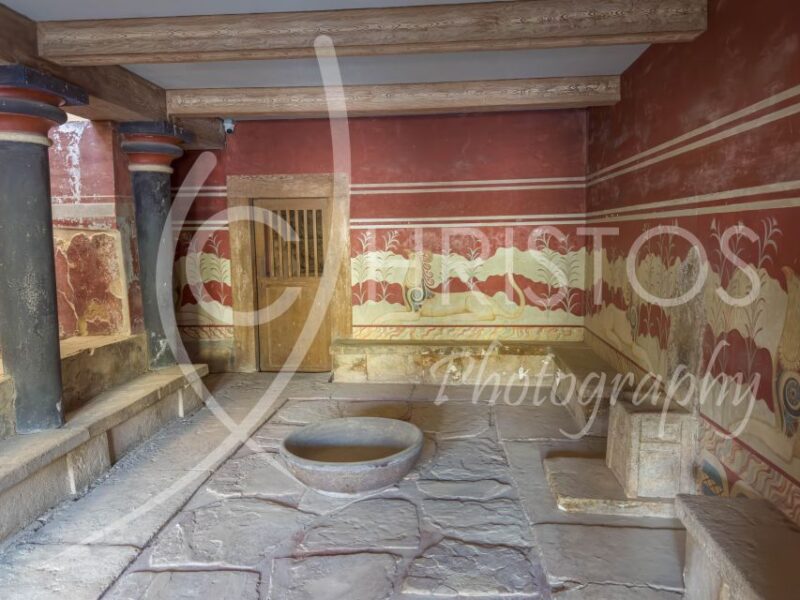
The Minoan civilization’s legacy continues to captivate scholars and visitors alike, as its architectural marvels and artistic achievements offer unparalleled insights into the sophistication of this ancient Aegean culture.
Knossos Palace, with its labyrinthine layout, intricate frescoes, and advanced engineering, stands as a testament to the Minoans’ ingenuity. Visitors can explore:
- The iconic Throne Room, adorned with a stunning griffins fresco
- The Queen’s Megaron, showcasing the grandeur of Minoan royal life
- The Storage Magazines, highlighting the civilization’s organizational prowess
- The intricate plumbing and drainage system, evidence of their technical expertise
Delving into the Minoan past provides a window into a captivating world that continues to shape our understanding of ancient Mediterranean cultures.
Intricate Frescoes and Artistry
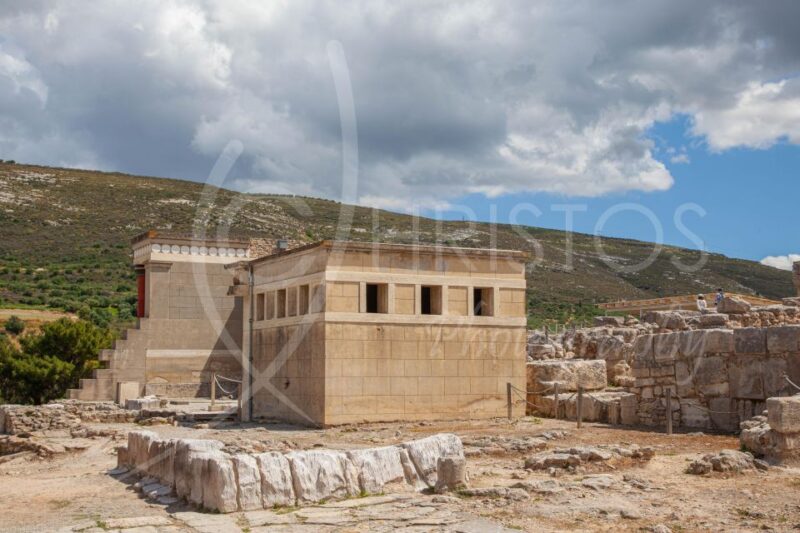
Remarkably, the intricate frescoes adorning the walls of Knossos Palace offer a captivating glimpse into the artistic prowess of the Minoan civilization. These vivid wall paintings depict scenes from daily life, religious rituals, and mythological figures.
The frescoes’ vibrant colors and dynamic compositions showcase the Minoans’ mastery of artistic techniques. One of the most famous is the ‘Bull-Leaping’ fresco, which portrays acrobats performing dangerous stunts with raging bulls.
Other notable frescoes include the ‘Saffron Gatherer’ and the ‘Griffin’ frescoes, which illustrate the Minoans’ fascination with the natural world. These remarkable artworks not only captivate visitors but also provide invaluable insights into the Minoan culture and its sophisticated artistic achievements.
The Iconic Throne Room
Among the most captivating features of Knossos Palace is its iconic Throne Room, which offers a glimpse into the seat of power and ceremonial heart of the Minoan civilization.
Situated at the northern end of the complex, this well-preserved chamber features an impressive alabaster throne and elaborate frescoes depicting mythological creatures, such as the iconic griffins.
Visitors can imagine the grandeur and solemnity of the ceremonies that once took place here, where the Minoan king or high priest would have sat in state, presiding over important rituals and decisions.
The Throne Room’s remarkable state of preservation provides a tangible connection to the ancient past, allowing modern visitors to step back in time and experience the majesty of Minoan power and artistry.
More Great Thing To Do NearbyAdvanced Engineering and Plumbing
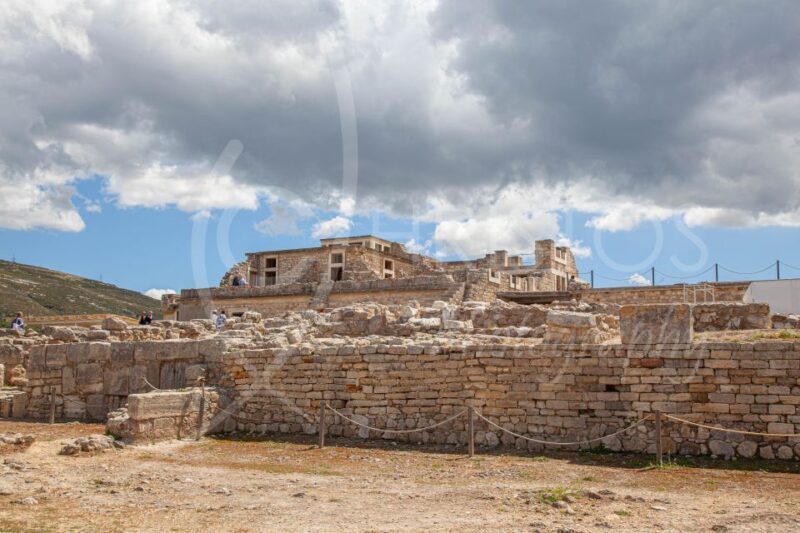
Beyond the imposing architecture and ornate frescoes, Knossos Palace also showcased the Minoans’ exceptional engineering prowess and innovative plumbing systems.
The palace boasted an advanced drainage network, with terracotta pipes channeling water away from the buildings. This intricate system allowed for the efficient removal of wastewater and prevented flooding, a common issue in the Mediterranean climate.
Plus, the Minoans installed early forms of sanitation, including latrines and a primitive water supply system. These engineering marvels demonstrate the Minoan civilization’s advanced understanding of hydraulics and their commitment to maintaining a functional, well-planned palace complex.
Knossos Palace stands as a testament to the Minoans’ ingenuity and their ability to create a sophisticated infrastructure within their palatial center.
- Heraklion: Day Trip to Santorini With Private Tour
- From Heraklion: Sunset Private Sailing Boat Trip
- Full Day Trip to Knossos Cave of Zeus Lasithi & Olive Oil Factory
- Trypiti Beach and Gorge Jeep Safari
- From Crete: Santorini Day Trip by Boat With Oia & Fira Visit
- Private Sailing From Heraklion. 5-Hour Catamaran Trips
Labyrinthine Corridors and Structures
The complex of interconnecting structures at Knossos Palace encompasses a labyrinthine network of corridors, multi-story buildings, and rooms adorned with vivid frescoes, providing visitors a captivating glimpse into the architectural sophistication of the Minoan civilization.
Exploring the palace, one can discover:
- The Grand Staircase, a monumental feature leading to the upper floors
- The Queen’s Megaron, a lavishly decorated reception hall and living quarters
- The Storage Magazines, revealing the palace’s extensive food production and distribution systems
The intricate layout of the palace, designed to serve various administrative, religious, and residential functions, offers a profound understanding of the Minoans’ advanced engineering prowess and their sophisticated approach to urban planning.
Ceremonial and Political Center
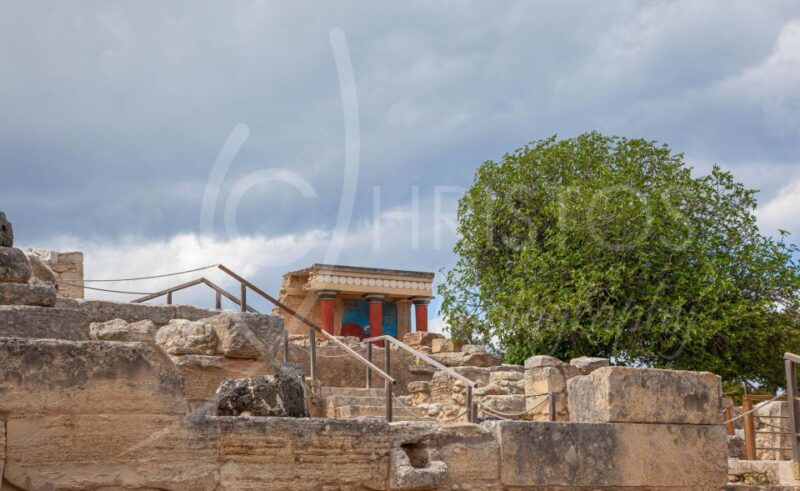
Knossos Palace served as the ceremonial and political center of the Minoan civilization, underscoring the pivotal role it played in the cultural and administrative affairs of the region. At the heart of the palace complex lay the Throne Room, where the Minoan ruler would have presided over important rituals and ceremonies. The intricate layout of the palace, with its interconnected structures, multistory buildings, and vivid frescoes, reflects the advanced engineering and architectural prowess of the Minoans. The palace’s sophisticated plumbing and drainage systems further attest to their technical sophistication. As a UNESCO World Heritage Site, Knossos Palace continues to captivate visitors, offering a unique window into the grandeur and complexity of the Minoan civilization.
| Key Features | Significance | Functions |
|---|---|---|
| Throne Room | Ceremonial center for Minoan ruler | Presided over rituals and ceremonies |
| Interconnected Structures and Multistory Design | Advanced engineering and architectural capabilities | Served various administrative and residential purposes |
| Sophisticated Plumbing and Drainage Systems | Technical sophistication of Minoan civilization | Supported the palace’s complex operations |
Accessibility and General Information
Unfortunately, Knossos Palace’s accessibility is limited, making it unsuitable for certain visitors. Wheelchair users, visually impaired people, those with high blood pressure, and the hearing-impaired may face difficulties exploring the complex.
The palace site, discovered and partially reconstructed by British archaeologist Sir Arthur Evans in the early 20th century, is located near the modern city of Heraklion on the island of Crete. It’s one of the most significant archaeological sites in the Aegean region and a UNESCO World Heritage Site.
However, the labyrinthine corridors, multi-story buildings, and uneven terrain can pose challenges for those with mobility, vision, or hearing issues. Visitors are advised to consider their needs before planning a trip to Knossos Palace.
Frequently Asked Questions
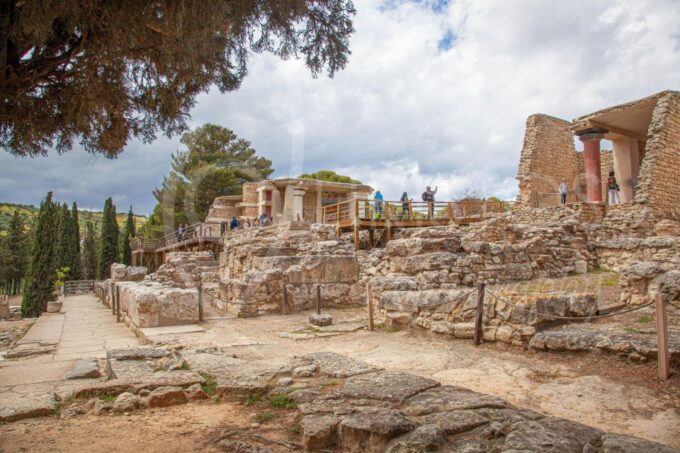
Is the Tour Suitable for Children Under 12 Years Old?
The tour is generally not suitable for children under 12 years old. The tour involves exploring ancient ruins and may not hold the attention of younger children. It’s recommended for those aged 12 and above who can appreciate the historical significance.
Can I Get a Refund if I Need to Cancel My Booking?
According to the details, you can reserve your spot and pay nothing today. If you need to cancel your booking, you’ll have to check the tour operator’s refund policy, as this information isn’t provided.
Are There Any Discounts Available for Senior Citizens or Students?
Yes, there are discounts available for senior citizens and students at Knossos Palace. Seniors over 65 and students with valid ID can enjoy a reduced entrance fee, typically around 30-50% off the regular price.
Can I Purchase Tickets on the Day of the Visit or Is Advance Booking Required?
Advance booking is required to secure your spot on the tour. You can’t purchase tickets on the day of the visit, so it’s best to reserve your spot in advance to guarantee your participation.
Are There Any Specific Dress Code Requirements for the Site?
There are no strict dress code requirements for visiting Knossos Palace. Visitors should wear comfortable, weather-appropriate clothing and sturdy footwear, as the site involves walking on uneven terrain. Modest attire is generally recommended when exploring historical sites.
Recap
Knossos Palace stands as a remarkable testament to the Minoan civilization’s cultural and technological achievements.
Its intricate frescoes, advanced engineering, and sophisticated urban planning showcase the ingenuity of this ancient society.
Today, visitors can explore the palace’s labyrinthine corridors and iconic Throne Room, seeing the rich history and legacy of one of the world’s most captivating archaeological sites.
You can check if your dates are available here:More Tour Reviews in Heraklion
Not for you? Here's more things to do in Heraklion we have recnetly reviewed
- 15 Best Dining Experiences In Heraklion
- 13 Best Full-Day Tours In Heraklion
- 4 Best BBQ Experiences In Heraklion
- 15 Best Dinner Tours In Heraklion
- 25 Best Cruises And Boat Tours In Heraklion
- 25 Best Lunch Experiences In Heraklion
- 18 Best Food Tours In Heraklion
- Visit Knossos & Heraklion City (Walking and Tasting Tour)
- Rouvas Gorge
- Between the Myths & Locals: Zeus Cave & Lassithi Plateau Villages
- Private Tour: Archeological Museum of Heraklion and City Tour
- Crete: Knossos Archaeological Site Ticket
